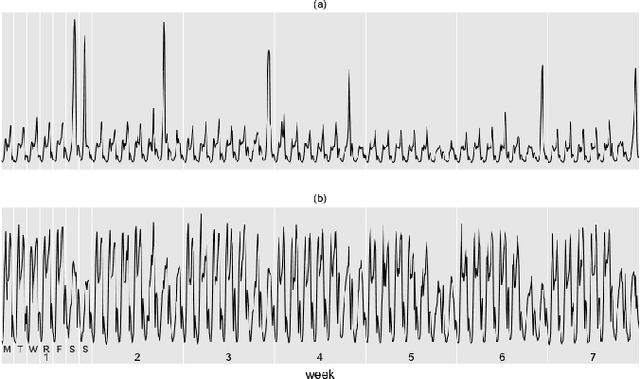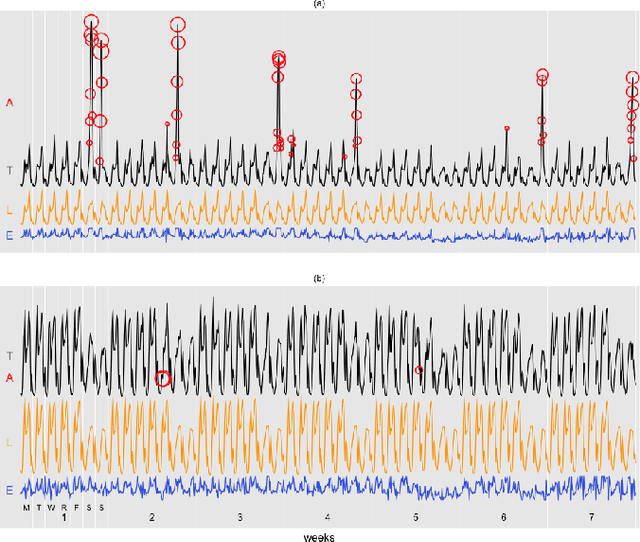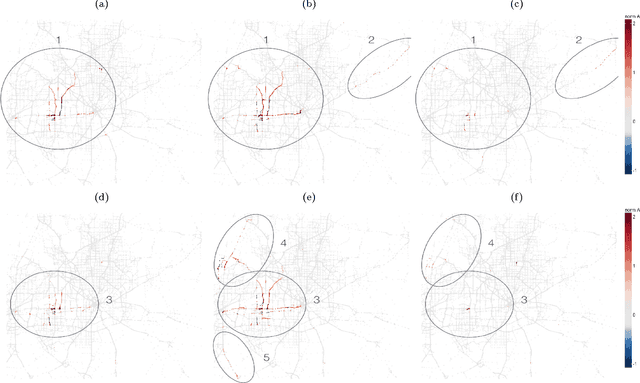Chris Volinsky
AT&T Labs Research
Quantifying Urban Traffic Anomalies
Sep 30, 2016


Abstract:Detecting and quantifying anomalies in urban traffic is critical for real-time alerting or re-routing in the short run and urban planning in the long run. We describe a two-step framework that achieves these two goals in a robust, fast, online, and unsupervised manner. First, we adapt stable principal component pursuit to detect anomalies for each road segment. This allows us to pinpoint traffic anomalies early and precisely in space. Then we group the road-level anomalies across time and space into meaningful anomaly events using a simple graph expansion procedure. These events can be easily clustered, visualized, and analyzed by urban planners. We demonstrate the effectiveness of our system using 7 weeks of anonymized and aggregated cellular location data in Dallas-Fort Worth. We suggest potential opportunities for urban planners and policy makers to use our methodology to make informed changes. These applications include real-time re-routing of traffic in response to abnormally high traffic, or identifying candidates for high-impact infrastructure projects.
 Add to Chrome
Add to Chrome Add to Firefox
Add to Firefox Add to Edge
Add to Edge